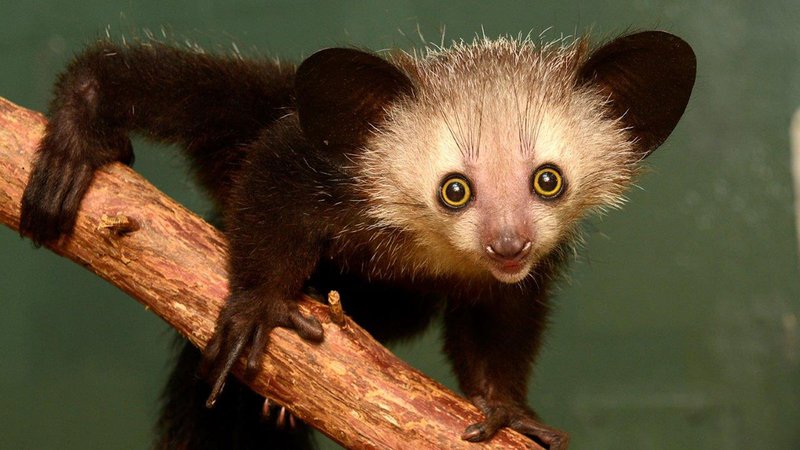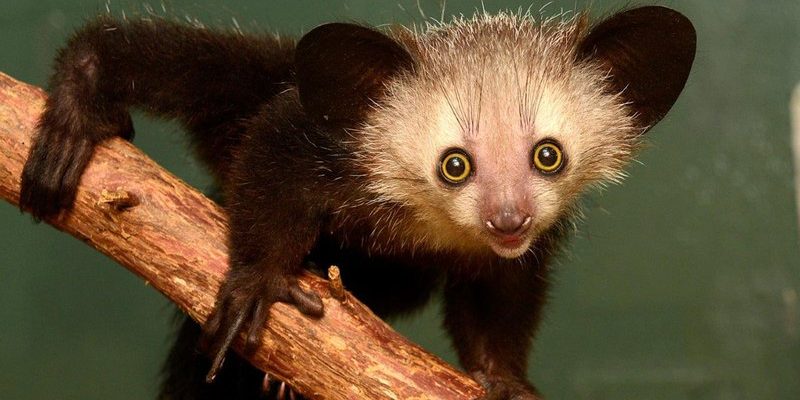
Imagine you’re sitting with a friend, and they suddenly spot something interesting across the room. They reach out with a long stick to poke at it, just like an aye-aye would with its finger to tap on trees to find grubs. This behavior isn’t just quirky; it reflects a level of intelligence that’s both surprising and fascinating. Aye-ayes use their unique skills in ways that showcase their ability to problem-solve and adapt to their environment, making them quite remarkable when it comes to animal cognition.
Understanding Aye-Aye Behavior
Aye-ayes are nocturnal animals, meaning they do most of their foraging and exploring at night. This behavior comes with its own set of adaptations. For instance, their large eyes are designed for low-light visibility. This helps them spot potential prey like insects hiding within the bark of trees. It’s almost like having night vision goggles, right?
Their distinct long middle finger is another adaptation that sets them apart. Unlike our hands, this finger is incredibly flexible and can be used to tap on surfaces. When they find a hollow spot in a tree, they can quickly extract the tasty larvae hiding within. This finger isn’t just a random feature; it’s a brilliant tool that demonstrates their ability to use their environment in unique ways.
Social Behavior and Communication
You might think of aye-ayes as solitary creatures, but they do have social structures. Male aye-ayes are often quite territorial, marking their area with scent to ward off others. Female aye-ayes, on the other hand, can be more social, sometimes sharing space with others.
Communication among aye-ayes happens through vocalizations and scent marking. They make various sounds, from clicking to grunting, which can indicate different emotional states or warnings. So, if you were to listen closely in the forests of Madagascar, you might hear an aye-aye chattering about its findings, almost like it’s sharing a meal with friends.
The Problem-Solving Skills of Aye-Ayes
Aye-ayes exhibit impressive problem-solving skills that allow them to adapt to challenges in their environment. For instance, if they encounter a particularly tough tree to tap, they won’t just give up. They might try different angles or even combine their tapping technique with their keen sense of hearing to locate hidden insects.
This adaptability is a clear sign of intelligence. In the wild, they have to constantly assess their surroundings and make split-second decisions to find food, escape predators, and navigate their habitat. It shows that their brains are wired for survival, and that’s a smart move in the animal kingdom.
Learning and Memory
Another intriguing aspect of the aye-aye’s intelligence is their ability to learn from experience. Studies have shown that aye-ayes can remember the locations of food sources and even recognize individual trees where they’ve previously found food. This ability to learn and remember is crucial for their survival, especially in the dense forests where they live.
For example, if an aye-aye finds a tree rich in grubs, it will likely return to that tree again and again. This shows not just that they can find food but that they can also track what works best for them. Honestly, it’s like when you find a great café and keep returning for your favorite coffee—aye-ayes do the same with tasty tree snacks!
Comparing Aye-Ayes to Other Primates
When we look at the intelligence of aye-ayes, it’s interesting to compare them with other primates. For instance, while chimpanzees are known for their tool use and social behaviors, aye-ayes excel in solitary problem-solving and foraging techniques. It’s like comparing apples to oranges; both are smart but in different ways.
Additionally, the aye-aye’s unique adaptations allow it to thrive in an environment where other primates might struggle. Their specialized diet and nocturnal behavior set them apart from many of their primate cousins. You can see how evolution has shaped their intelligence to suit their niche.
Conservation and Protection
Despite their interesting behaviors and noteworthy intellect, aye-ayes face significant threats to their survival. Habitat destruction and hunting have led to a decline in their population, putting them at risk. As one of the most unique species on Earth, it’s crucial for us to protect these incredible animals and their habitats.
Conservation efforts focus on preserving the aye-aye’s natural habitat. This includes educating local communities about their importance and promoting sustainable practices. By protecting their environment, we’re not just saving a species—we’re also preserving an entire ecosystem.
The Future of Aye-Ayes: Bridging Research and Conservation
Research on aye-ayes is ongoing, and scientists are continually discovering more about their behavior and intelligence. Understanding their cognitive abilities helps inform conservation strategies and emphasizes the need for further study. By observing how these creatures interact with their environment, researchers can learn valuable lessons about adaptability and survival.
Future conservation efforts will likely integrate these insights, focusing on protecting both the aye-aye and the unique habitats they occupy. As we uncover more about their intelligence, we’re reminded of how interconnected all life is and how important it is to value the uniqueness of each species.
Wrapping Up: Aye-Aye Intelligence in Perspective
So, how smart is an aye-aye? Well, they might not be solving complex puzzles like some primates, but their problem-solving skills, adaptability, and communication methods showcase a different kind of intelligence. These unique creatures remind us that intelligence isn’t just about what we can measure on a test.
Aye-ayes are a great example of how evolution shapes the abilities of animals in specific environments. Their incredible techniques for finding food and communicating with each other reveal an intelligence that’s perfectly suited to their lifestyle. Let’s celebrate the aye-aye and work to protect their future, because every little bit of understanding and appreciation helps in the effort to keep them around for generations to come!

